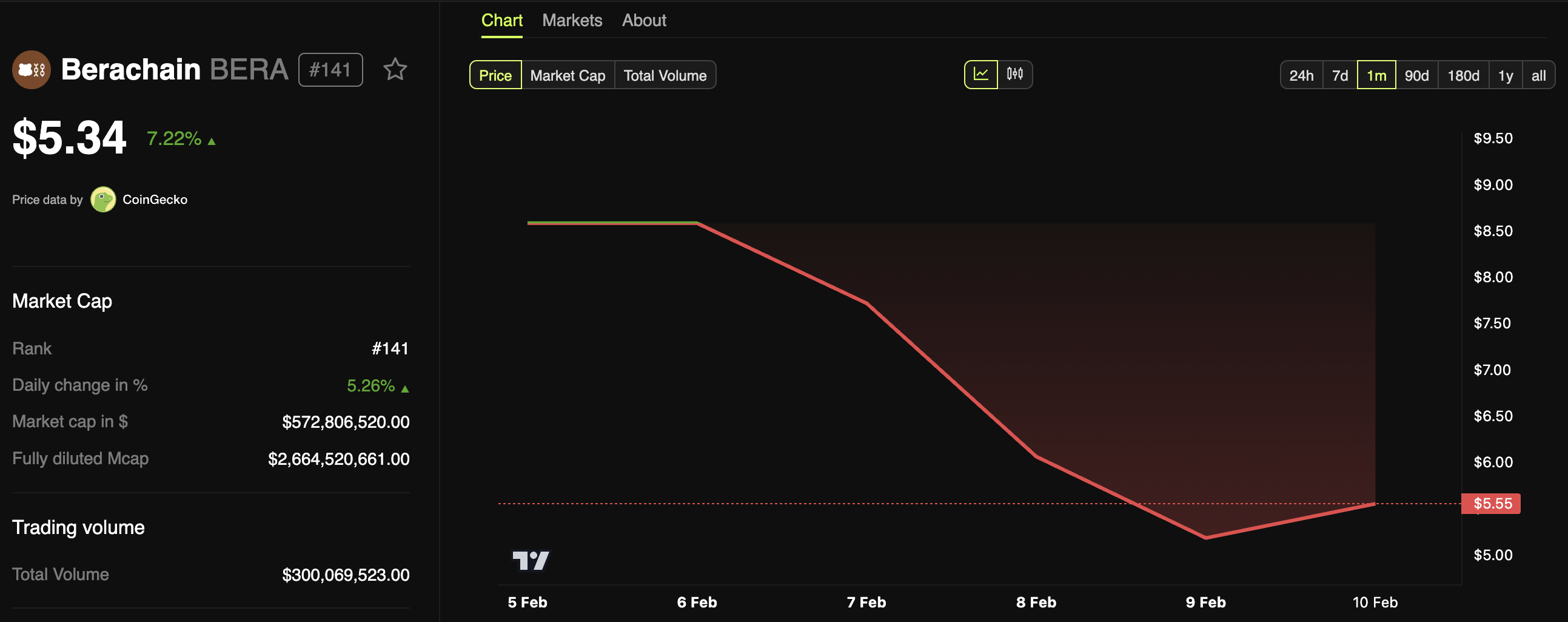-
Berachain users allege that a lead developer is secretly selling BERA tokens, contributing to a sharp decline in its value.
-
The blockchain’s staking model was not fully disclosed, and private investors hold over 35% of the token supply.
-
If Berachain successfully implements its Proof of Liquidity system, it could regain trust and become a unique blockchain experiment.
Following allegations of token manipulation, Berachain faces scrutiny from its community, raising concerns over transparency and long-term sustainability.
Questionable Decisions from Berachain Developers
Berachain, the new layer-1 blockchain network, has garnered notable attention in the crypto space, primarily due to its recent airdrop and mainnet launch. While the project aims to innovate with its unique Proof of Liquidity mechanism, its approach to marketing and community engagement has drawn comparisons to the volatile nature of meme coins.
Prior to its launch, Berachain’s liquidity platform amassed an impressive $2.3 billion. The project’s airdrop, one of the year’s largest, coincided with its mainnet launch on February 6, further boosting its visibility. Moreover, the immediate listing of the BERA token on Binance and other major exchanges indicated strong initial interest.
Nonetheless, significant concerns emerged post-launch. Reports surfaced regarding the distribution of BERA tokens, where testnet farmers expressed dissatisfaction with minimal rewards, raising questions about fair allocation.
Berachain operates a self-contained ecosystem featuring three tokens: BERA, BGT, and HONEY, each fulfilling distinct roles. However, critics argue that the staking and burning mechanics can be manipulated, potentially undermining the intended purpose.
“Wait, so all the huge insiders of Berachain, with locked BERA tokens, can stake the BERA, receive BGT, burn the BGT for BERA and then dump? Please tell me this isn’t true. It’s almost criminal,” commented one user, highlighting the alarming implications of tokenomics transparency.
Ericonomic, a blockchain analyst, voiced his concerns regarding Berachain’s token distribution, noting that over 35% of the BERA supply has been allocated to private investors. The looming inflationary pressures raise serious doubts about the token’s future performance and stability.
Further allegations pointed to a co-founder, DevBear, allegedly liquidating a portion of his airdropped tokens while the team initially designed those allocations. Ericonomic claimed, “A cofounder is selling tokens from one of his doxxed addresses. He got around 200,000 BERA from the airdrop and then swapped some of those tokens for WBTC, ETH, BYUSD, etc.”
This lack of transparency around Berachain’s staking mechanisms has contributed to the prevailing skepticism among investors, with many questioning the project’s sustainability and governance practices.
BERA Token Continues to Struggle
Following the airdrop, BERA’s price experienced a drastic decline, plummeting over 50% from its peak, indicating a loss of investor confidence. The overall market response reflects heightened scrutiny regarding the project’s governance and economic model.

Despite these challenges, some community members maintain an optimistic outlook regarding the potential of the Proof of Liquidity (PoL) mechanism. The support from developers and an engaged community may pave the way for the project’s resurgence if the anticipated features are robustly implemented.
Conclusion
The current predicament facing Berachain underscores critical issues surrounding transparency and community trust within the blockchain space. With ongoing scrutiny and potential pitfalls posed by token mechanics, the project’s future hinges on the integrity of its development team and the efficacy of its innovative models. Should Berachain navigate these challenges and honor its commitments, it may yet consolidate its standing as a net positive in the evolving landscape of decentralized finance.
